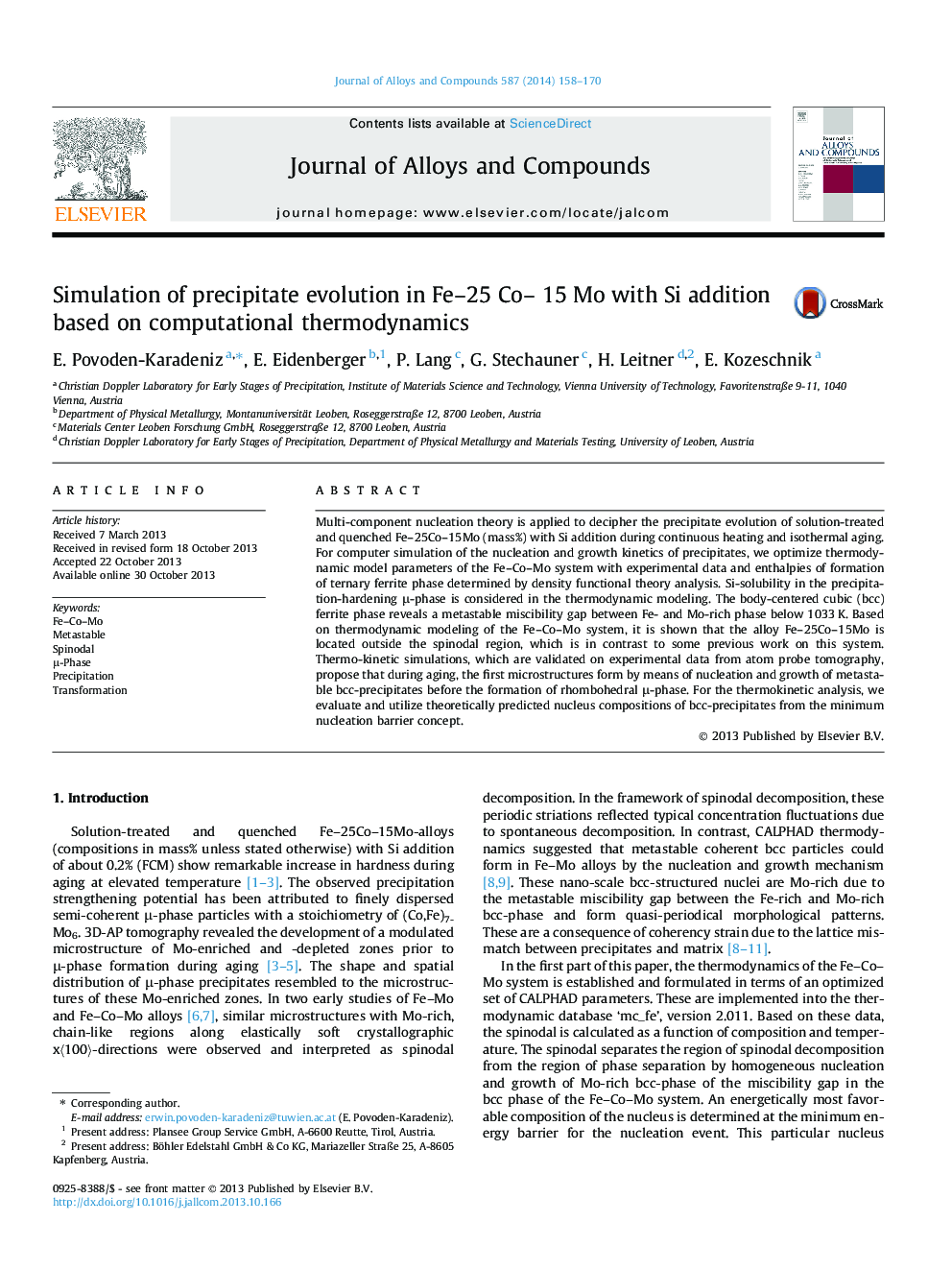| Article ID | Journal | Published Year | Pages | File Type |
|---|---|---|---|---|
| 1612285 | Journal of Alloys and Compounds | 2014 | 13 Pages |
•The nucleus composition of metastable bcc-precipitates is modeled.•Enthalpies of bcc are calculated using special quasirandom structures.•Thermodynamic model parameters of intermetallic μ-phase are optimized.•The precipitate evolution in Fe–Co–Mo alloy during aging is simulated.•Elastic strain is considered in the precipitation simulation.
Multi-component nucleation theory is applied to decipher the precipitate evolution of solution-treated and quenched Fe–25Co–15Mo (mass%) with Si addition during continuous heating and isothermal aging. For computer simulation of the nucleation and growth kinetics of precipitates, we optimize thermodynamic model parameters of the Fe–Co–Mo system with experimental data and enthalpies of formation of ternary ferrite phase determined by density functional theory analysis. Si-solubility in the precipitation-hardening μ-phase is considered in the thermodynamic modeling. The body-centered cubic (bcc) ferrite phase reveals a metastable miscibility gap between Fe- and Mo-rich phase below 1033 K. Based on thermodynamic modeling of the Fe–Co–Mo system, it is shown that the alloy Fe–25Co–15Mo is located outside the spinodal region, which is in contrast to some previous work on this system. Thermo-kinetic simulations, which are validated on experimental data from atom probe tomography, propose that during aging, the first microstructures form by means of nucleation and growth of metastable bcc-precipitates before the formation of rhombohedral μ-phase. For the thermokinetic analysis, we evaluate and utilize theoretically predicted nucleus compositions of bcc-precipitates from the minimum nucleation barrier concept.
